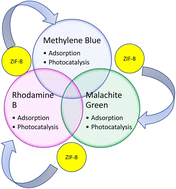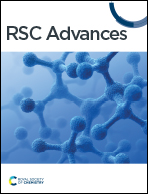ZIF-8 metal organic framework materials as a superb platform for the removal and photocatalytic degradation of organic pollutants: a review
Abstract
Metal organic frameworks (MOFs) are attracting significant attention for applications including adsorption, chemical sensing, gas separation, photocatalysis, electrocatalysis and catalysis. In particular, zeolitic imidazolate framework 8 (ZIF-8), which is composed of zinc ions and imidazolate ligands, have been applied in different areas of catalysis due to its outstanding structural and textural properties. It possesses a highly porous structure and chemical and thermal stability under varying reaction conditions. When used alone in the reaction medium, the ZIF-8 particles tend to agglomerate, which inhibits their removal efficiency and selectivity. This results in their mediocre reusability and separation from aqueous conditions. Thus, to overcome these drawbacks, several well-designed ZIF-8 structures have emerged by forming composites and heterostructures and doping. This review focuses on the recent advances on the use of ZIF-8 structures (doping, composites, heterostructures, etc.) in the removal and photodegradation of persistent organic pollutants. We focus on the adsorption and photocatalysis of three main organic pollutants (methylene blue, rhodamine B, and malachite green). Finally, the key challenges, prospects and future directions are outlined to give insights into game-changing breakthroughs in this area.

- This article is part of the themed collection: 2022 Reviews in RSC Advances


 Please wait while we load your content...
Please wait while we load your content...